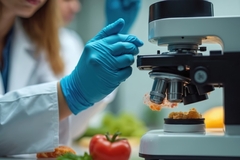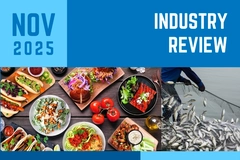
- Industry news
Industry news
- Category news
Category news
- Reports
- Key trends
- Multimedia
- Journal
- Events
- Suppliers
- Home
- Industry news
Industry news
- Category news
Category news
- Reports
- Key trends
- Multimedia
- Events
- Suppliers
Food made from discarded ingredients could be a big hit, according to research

13 Dec 2017 --- A new study has found the strong potential for the consumer acceptance of a new category of foods created from discarded ingredients with the latest focus on a relish made entirely from ingredients that were destined to be dumped.
A team of professors from Drexel University sought to find out if foods made from surplus ingredients – termed value-added surplus products (VASP) – that would have been otherwise wasted can be a promising solution to food insecurity if appropriately marketed to consumers.
The joint research was led by three Drexel professors, Jonathan Deutsch, PhD professor in the Center for Food and Hospitality Management, Hasan Ayaz, PhD, associate research professor in the School of Biomedical Engineering and Rajneesh Suri, PhD, professor in the LeBow College of Business along with three graduate students Siddharth Bhatt, Jeonggyu Lee and Ben Fulton. It is entitled “From food waste to value-added surplus products (VASP): Consumer acceptance of a novel food product category.”

“There is an economic, environmental and cultural argument for keeping food, when possible, as food and not trash,” says Deutsch, who has created ‘upcycled’ products with the Drexel Food Lab in the past. “Converting surplus foods into value-added products will feed people, create opportunities for employment, entrepreneurship and lower the environmental impact of wasted resources.”
Rescued relish
Rescued Relish is an anything-goes condiment made from excess produce that Philabundance, a Philadelphia anti-hunger organization, can't move. The relish is modeled on a Pennsylvania Dutch chowchow recipe — a tangy mix of sweet, spicy and sour flavors.
American households are estimated to collectively throw away 80 billion pounds of food each year. Many ingredients are also discarded during the manufacturing process and perfectly edible produce deemed "ugly" doesn’t make it to grocery displays.
Meanwhile, more than 42 million Americans experience food insecurity, according to Drexel University.
But the big question is whether consumers will accept products made from ingredients that were destined for the garbage?
Would a person actually pay for and eat a granola bar made from spent brewing grains or a relish made from vegetables apparently unfit for the supermarket?
Getting over potential reluctance
While the macroeconomic benefits of value-added surplus products seem clear, the trash-adjacent quality could make people reluctant to consume such products.
Drexel researchers decided to decipher the consumers’ decision-making process to help come up with appropriate communication for these products.
The researchers conducted a series of tests as a first attempt to understand a consumer’s decision-making process with respect to this new food category, value-added surplus foods.
They examined three product cues for value-added surplus products: product description, label and benefit (to self or others).
In the first study, participants were presented with three food categories: Conventional, Organic and Value-added surplus food. Study participants were presented four different foods using these descriptions.
Participants felt that value-added surplus products were more helpful to the environment than conventional foods, but less helpful when compared to organic foods. The results demonstrated that participants clearly identified value-added foods as a unique category with unique perception, separate from organic and conventional categories.
Next, researchers tested nine product labels to brand value-added surplus products: Upcycled, recycled, upscaled, rescaled, reprocessed, reclaimed, up-processed, resorted and rescued. “Upcycled” was observed the most preferred label, followed by reprocessed.
For the final test, the researchers looked into whether a product’s benefit for self or others factored into their feelings. It turned out that participants affirmed that consuming value-added products will generate greater benefits to others than themselves.
The positive findings of this study are of value to sustainability advocates, food marketers and scholars. By exploring consumer acceptance of and potentially a preference for value-added surplus products, this research marks some of the first attempts to empirically examine a consumer’s evaluation process for this novel food category.
Most importantly, researchers have begun to evaluate how to efficiently present value-added surplus products as a novel category of food to consumers, so that it may contribute some relief to the global food crisis.
“Value-added surplus foods may be perceived closer to organic foods as a category, encouraging the possibility of promoting such foods as a new category offering benefits to society.”
Not only that, but selling these foods could also prove lucrative.
“Depending upon how you communicate such products, they might also be able to fetch a price premium, like those afforded to organic foods,” Suri explains.











